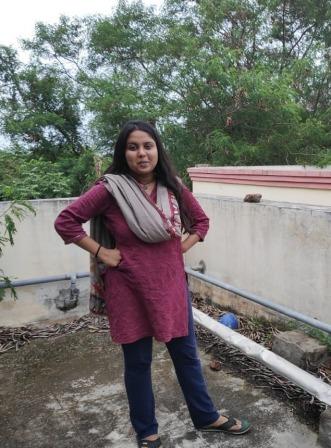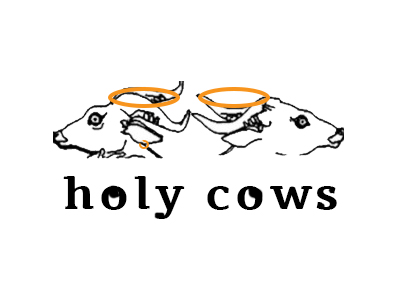Vaishali Khandekar
India eagerly, almost anxiously, waited for the results of the 2024 General Elections and witnessed a surprising outcome on June 04, 2024. Uttar Pradesh is one of the states that surprised viewers the most. Going completely against the labels of a sweeping BJP victory in all the 80 seats of UP, the public of the State allowed BJP to win only 33 seats. Out of the rest, 37 seats went to Samajwadi Party (SP), 6 to Congress (INC) and 2, 1 and 1 to Rashtriya Lok Dal (RLD), Aazad Samaj Party (Kanshiram) and Apna Dal respectively. The Bahujan Samaj Party, one of the biggest contenders in UP, could not manage to win a single seat this time. In fact, its vote share was slashed to only 9.39 %.
Since the result, many explanations and narratives criticising the BSP and Mayawati has been offered by both print and social media. They even go to the lengths of calling BSP BJP’s B team, insinuating an informal, under-the-table support from BSP to BJP.
Theoretical Savarna Voter and Empirical Shudra Voter
During the last decade when BJP was climbing up in elections in the country, UP was considered the strongest base for the party. The urban educate elite liberal population in metropolitan cities, a demographic which was upper caste Hindus as well as other religions blamed the BSP, Dalits and OBCs of UP, still a backward state in contemporary India, to vote and bring the Bhartiya Janta Party to power. An elitist stance also grew which blamed the backwardness, lack of education and low literacy amongst the backward castes and Dalits who were said to be easily swayed towards BJP’s appeasement.
Even ironically today, when BJP has lost the majority of the seats in UP, this faction still believes that Mayawati, Dalits and OBCs of UP are responsible for the loss of the I.N.D.I.A. bloc and victory of the BJP in 33 constituencies.
First of all, the exit polls, the general attitude of anxiety and fear as well as the surprise to the results tell us that this faction is often oblivious to the ground realities of local democracy present beyond the spaces inhabited by them. This faction also falls prey to the godi media from all directions, left, right, and center. Every election has its brands which become bigger than party manifestoes. Though BJP’s ideology has been a brand in itself it has put forth various immediate issues like Pulwama and Article 370 to appease its voter base. Some years Congress offered no such brand and lost. In the last few years, Cong has attempted to portray an ideological stance of ‘love’ against hate. These did not prove to be as effective as seen in the recent assembly elections in states like Rajasthan and Madhya Pradesh. The only fruitful brand it created in this election was the constitution of India.
Rahul Gandhi grabbed the opportunity and aggressively campaigned with a strong symbolism of the Constitution arguing that in this election, the voters must save the constitution.
This is in direct relation to the change in voting patterns in Uttar Pradesh.
Constitution holds a scriptural value for Dalits and they actively responded to claims of endangered constitutions. In fact, like no other group (religious or caste-based) in India, Dalits in UP showed that threats to the constitution will not be tolerated.
The UP results of this elections puts an end to some debates with elitist connotations which education and voter patterns were equated.
It is definitely true that the I.N.D.I.A bloc used the constitution narrative which is an Ambedkarite philosophy for their own benefit and it has been successful but I do not believe that Dalits in UP were lured into this narrative about an endangered constitution. Subscription to the view that this Dalits acted merely out of this instilled fear falls prey to the same educated liberal gaze which termed Dalits as a population easily coaxed or appeased into voting a certain way. I do not believe that Dalits in UP were drawn into voting out of the fear of a danger to the constitution.
Although the I.N.D.I.A. bloc’s appropriation of the constitution was indeed purposeful and an electoral tactic and it completely hijacked a soft spot near to Dalits’ hearts but at the same time, it also needs to be acknowledged that this was thoughtful and tactical thinking of the part of these voters instead of a lure or fear. It may have been clear after these results that the claims of fascism and anti-democracy in India made by mainstream intellectuals and intelligentsia have missed the mark by a huge margin. These defeating and pessimistic claims have been diluted by the workings of local democratic principles present on beyond metropolitan cities. Though Dalits have never benefitted from the binary Indian politics of BJP-Congress and now pro-BJP or anti-BJP, the Dalits in UP came out in huge numbers to deny power to any anti-constitutional parties, the voter pattern shifting towards I.N.D.I.A. alliance also proves a visionary intellectual character of the Dalit voters in the state. Not only that, there has been a clear shift in voter patterns from BSP to the I.N.D.I.A. alliance.
BSP is popularly known as a party of Dalits and is said to be constricted to this demographic. If this is true and BSP is a Dalit party, surely these are Dalit votes that traveled from BSP to the I.N.D.I.A. alliance and highlighted a country, democracy, and constitution over party principle. What Dalits in UP have shown is the choice to rise above self-interest and sacrificial acts towards the Indian democracy. It is a sacrifice because the Dalits might not receive the returns of these favors from the same alliance they voted for. By rising above self-interest, voting beyond welfarism and their own caste-based party, they highlight an organic, practicing intellectual character cast through their votes.
Many articles are publishing praising the public of UP, or love the state itself. There is also a bizarre conspiracy theory that ‘the lord Ram’ himself has voted BJP out. But on looking beyond these half-thought and romantic engagements, who needs to be credited for the loss faced by the BJP is the civil society of Dalits in UP. However, in the mainstream media, Dalits are suitable for blame but never get credit. And we must not forget that this civil society wasn’t born out of thin air but is the product of Kanshiram, Mayawati, BAMCEF and BSP’s hard work. The political process of BSP is not merely electoral, it has instilled the importance of local democratic principles and grown organic intellectuals in the State.
Let us see a constituency-wise analysis:
This needs to be prefaced. A picture of a bar graph with BJP’s victory margin and BSP’s vote share in a select 16 constituencies in the 2024 elections is being widely shared on social media and by many anti-BJP YouTubers. I will not provide a visual representation of data because it wrongly becomes sufficient for most Savarna media houses as a replacement for a complete analysis. This is antithetical to the academic work that involves some research.
I am not a journalist or a political analyst but as a student of socio-political processes of Uttar Pradesh, there are a few points one must remember. Firstly, since the 1980s, UP politics completely changed with not only the entry but also the growing popularity of regional parties. These strong regional parties gave rise to four to five almost equally strong players electorally which makes UP unpredictable and anyone who takes UP for granted often bears a shock. Secondly, any analysis that does not account for a historical analysis not only of the state but a regional study of individual constituencies, villages, and sometimes clusters of villages fails to understand the electoral patterns.
However, BSP’s power and advantages have been flipping the game without having to win it and then making decisions through not necessarily having a majority but being a decisive factor. This is a way to gain power while being a minority in numbers, and ants become elephants. Though if one still wants to divulge a myopic understanding of India only post-2014 and concerns itself with two-dimensional pro-BJP and anti-BJP politics, analysis needs to be deeper with some rigor. One needs to ask certain questions, how many of these constituencies have been traditionally BJP’s winning spots? How many of the candidates who won in these constituencies were second or third-time winners? What have been the voting patterns of these constituencies in the last twenty years?
Here is an attempt to understand some of the constituencies where BSP has apparently made BJP win.
- Akbarpur
Since the 1980s, BSP has won the seat four consecutive times (thrice with Mayawati as its candidate), BJP also four times, INC only twice in 1984, and SP is yet to open its account here.
Akbarpur is also one of the few seats where the Republican Party won with its candidate RJ Ram in 1967.
In 1996
BSP- 1,99,795
BJP- 1,75,228
SP- 1,69,046
In 1998
BSP- 2,63,561
SP- 2,38,382
BJP- 2,23,012
In 1999
BSP- 2,59,762
SP- 2,06,376
BJP- 1,82,753
In 2004
BSP- 3,25,019
SP- 2,66,750
BJP- 60,895
In 2009
INC- 1,92,549
BSP- 1,60,506
BJP- 1,36,907
In 2014, the BJP launched Devendra Singh won with a striking 49.57%. And BSP trailed with 20.85%.
BJP- 481,584
BSP- 2,02,587
SP- 1,47,002
INC’s share shrank from 30% to 9.97%. BSP and SP’s share shrank by around 4.34 and 2.89 percent. One can conclude that a disillusioned INC voters decided to vote for BJP.
In 2019, Devendra Singh continues to win.
BJP- 581,282
BSP- 3,06,140
INC- 1,08,341
In 2024
BJP- 517,423
SP- 4,73,078
BSP- 73,140
BSP’s vote share shrank drastically but so did BJP’s. It is clear that BSP’s vote share never actually went to BJP. This has been a stronger seat for BSP than INC or SP so why is BSP being blamed one has to wonder.
- Aligarh
Aligarh is also another seat where Ambedkar’s Republican Party of India grabbed a seat in 1962 by BP Maurya who later joined the INC.
Since the 1980s, the Janta Dal and BJP have won the seat 8 times, INC twice and BSP once in 2009 by 16,557 votes.
| Year | Margin (%) |
| 1991 | 2.6 |
| 1996 | 17.9 |
| 1998 | 21.1 |
| 1999 | 14 |
In 2004
INC- 1,67,142
BJP- 1,64,351
BSP- 1,59,941
In 2009
BSP- 1,93,444
Sp- 176,887
INC- 165,776
BJP- 126,988
In 2014
BJP- 5,14,624
BSP- 2,27,886
SP- 2,26,284
INC- 62674
In 2019
BJP- 656215
BSP- 426954 (SP alliance)
INC- 50880
In 2024
BJP- 501,834
INC- 4,86,187
BSP- 1,23,929
SP-BSP alliance also didn’t manage to win in 2019. This has been a very strong constituency for BJP for decades. BSP Voteshare only increased. So how did BSP voters go to BJP? This was the first time in many years that INC increased its vote share to such an extent. BSP’s vote share clearly was sent to INC. A Satish Kumar Gautam has been winning this seat for the last three times. If the same logic is applied to the 2014 elections, INC and SP technically made BJP win.
- Bansgaon
Bansgaon was in the talks a lot since one of the lowest winning margins of only 3150 votes.
Since 1990, INC and Samajwadi have been able to win the constituency only once each, in 2004 and 1996 respectively. During this period, BJP won 7 times (including 2024).
Though, between 1962 and 1989, INC won the seat 5 times but its popularity declined since then.
Bansgaon has been an SC seat (except for a few elections) but BSP never won here but has fought in every election since its establishment.
Let’s look at BSP’s vote share during these years.
In 1996
SP- 2,03,591
BJP- 1,77,422
BSP- 1,02,746
In 1998,
BJP- 217433
SP- 186893
BSP- 148699
In 1999
BJP- 1,84,684
SP- 1,74,996
BSP- 1,37,221
In 2004
INC- 1,80,388
SP- 1,35,501
BSP- 1,63,947
In 2009
BJP entered with Kamlesh Paswan.
BJP- 2,23,011
BSP- 1,70,224
SP- 1,13,170
In 2014
Kamlesh Paswan wins again
BJP- 4,17,959
BSP- 2,28,443
SP- 1,33,675
In 2019
Kamlesh Paswan wins again
BJP- 5,46,673
BSP- 3,93,205
BSP’s vote share showed no substantial division.
- Bhadohi
Bhadohi became a Lok Sabha Constituency only in 2008.
In 2009
BSP- 1,95,808
SP- 1,82,845
INC- 93,351
In 2014
BJP- 403,695
BSP- 2,45,554
SP- 2,38,712
In 2019
BJP- 510,029
BSP- 4,66,414
INC- 25,604
In 2024
BJP- 459,982
AITC- 415,910
BSP- 155,053
BSP vote share majoritarily went to the AITC instead of BSP.
- Bijnor
Since 1989, BJP has won this seat 5 times, BSP 2 times, and SP only once in 1998. INC has not won here since 1989.
In 1999
BJP- 2,14,266
SP- 1,90,566
BSP- 1,83,676
In 2004
RLD- 3,01,599
BSP- 2,21,424
BJP- 1,01,340
In 2009
RLD- 2,44,587
BSP- 2,16,157
INC- 85,158
In 2014
BJP- 4,86,913
SP- 2,81,139
BSP- 2,30,124
In 2019
BSP- 556,556
BJP- 4,86,362
INC- 25,833
In 2024
RLD- 404,493
SP- 3,66,985
BSP- 2,18,986
- Deoria
Since 1980, INC won only as early as 1980 and 1984. Since then, it has not been able to win in Deoria. BJP has won the seat 5 times, SP twice and BSP only once.
In 1996
BJP- 2,27,155
JD- 1,80,228
BSP- 92,819
In 1998
SP- 2,59,804
BJP- 2,55,736
BSP- 1,08,023
In 1999
BJP- 2,51,814
SP- 2,09,673
BSP- 1,35,019
In 2004
SP- 2,37,664
BJP- 1,85,438
BSP- 1,32,497
In 2009
BSP- 2,19,889
BJP- 1,78,110
SP- 1,51,389
In 2014
BJP- 4,96,500
BSP- 2,31,114
SP- 1,50,852
In 2019
BJP- 580,644
BSP- 3,30,713
INC- 51,056
In 2024
BJP- 504,541
INC- 4,69,699
BSP- 45,564
- Domariaganj
This seat is one of the few where INC has continued to win and give fair competition even after the 1990s. Since 1980, INC and BJP have won 3 and 5 times respectively. A key factor was when a strong INC candidate Jagdambika Pal shifted his course to BSP after 2009 elections. SP and BSP have been able to win the seat only once each in 1996 and 2004 respectively.
This constituency is interesting because it was not BSP which cut INDIA alliance’s vote but it was one of the only constituencies where the Azad Samaj Party (Kanshi Ram) fought apart from Nagina where its National leader emerged as its first member of parliament. The vote In 2024, BJP- 463,303, SP- 4,20,575
ASP(KR)- 81,305, BSP- 35,936. It was Kanshi Ram’s electoral rationality which made the bigger parties like BJP and Congress dependent on his party for support. This work was done by making the voters aware of their power. The Dalit voters who were supporting Congress or other parties were made visible the hypocrisy and duplicitous nature of these parties. We are bearing the fruits of it without any credit to him. It is not the figure ‘Ram’ but ‘Kanshi Ram’ who has saved democracy.
~~~
Vaishali Khandekar is pursuing her PhD from IIT Hyderabad.










